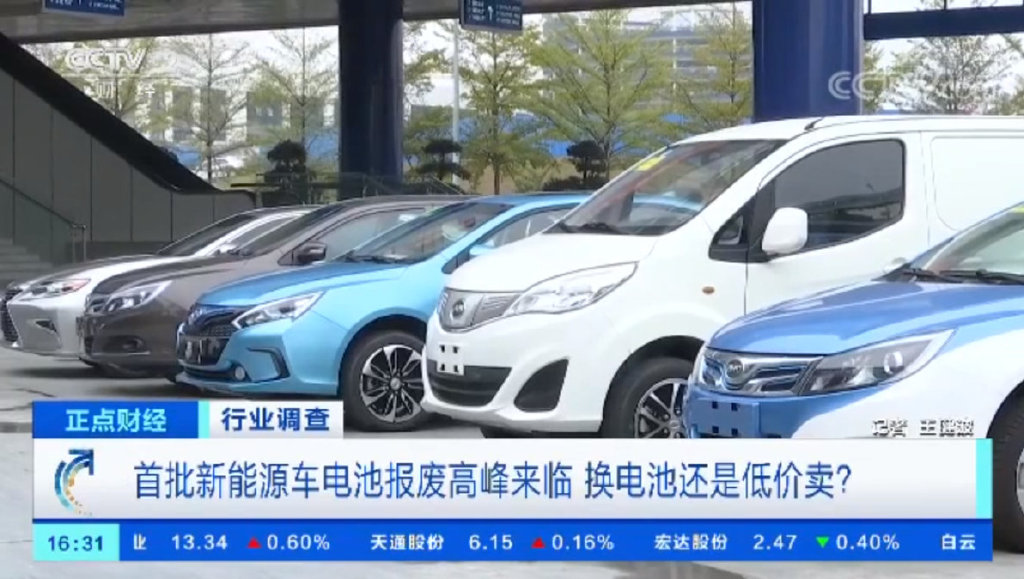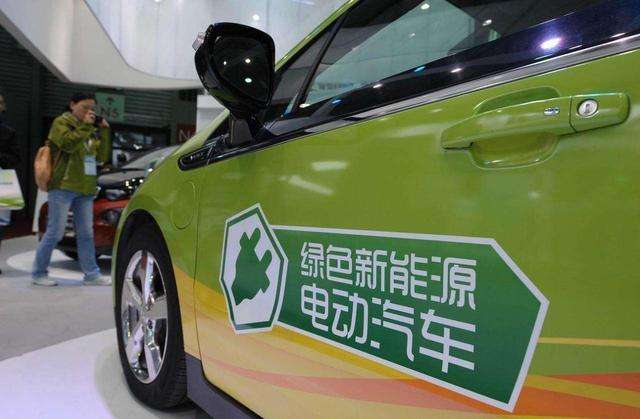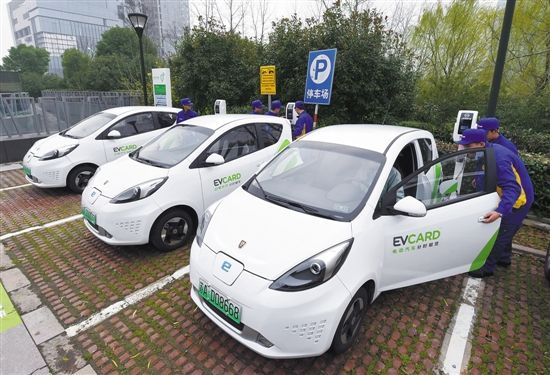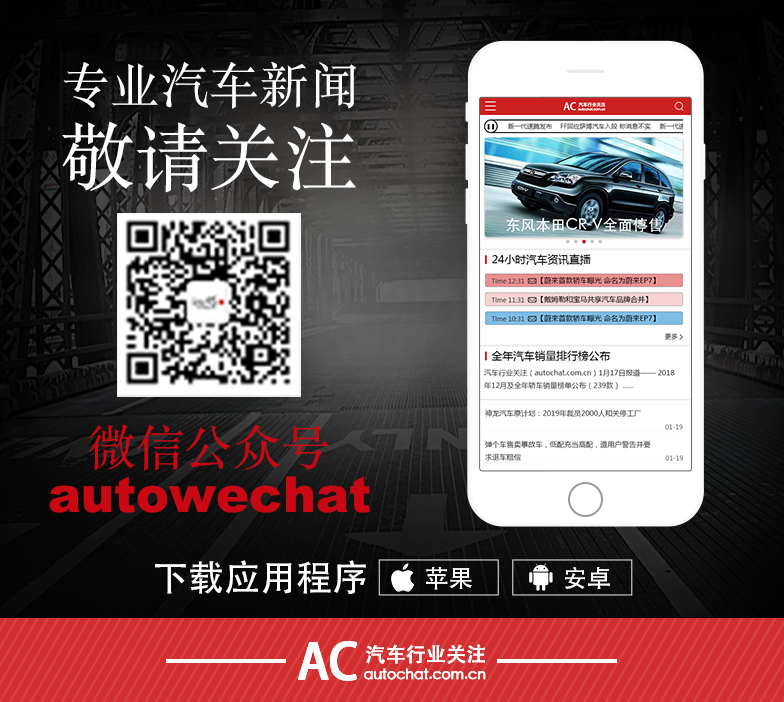In addition to Weibo, there is also WeChat
Please pay attention

WeChat public account
AutoBeta


2024-11-17 Update From: AutoBeta autobeta NAV: AutoBeta > News >
Share
AutoBeta(AutoBeta.net)12/10 Report--
Sales of new energy vehicles, which were originally small, have plummeted after subsidies declined this year, falling for five consecutive months by the end of November, and the decline continues to expand. According to the Federation of passengers, sales of new energy passenger vehicles in November were 72000, down 45.4% from a year earlier, almost halving. In this environment, the domestic sales giants BYD and BAIC have all fallen.
The new energy vehicles, which are regarded as "corner overtaking", have suddenly turned over in the corner. Since June this year, subsidies for new energy vehicles have been slashed, and overall sales have declined. From July to November, the decline in new energy sales gradually widened, falling by 3.8%, 21.7%, 34.8%, 46.0% and 45.4%, respectively, compared with the same period last year. Due to the continuous sharp decline in sales, the domestic new energy industry has taken a sharp turn for the worse, adding to the worries about the development of enterprises.

BYD and BAIC "fell"
Due to the obvious decline in overall sales, new energy car companies are having a hard time. In the new energy vehicles into the aggressive head of enterprises have also entered a difficult time, BYD and BAIC as the two major domestic sales of new energy vehicles, the performance has declined significantly.
When BYD released its November sales report on December 7th, the brand's new energy vehicles plummeted again, with sales of only 11220 vehicles in November, compared with 30076 in the same period last year, down 62.7% from a year earlier, the fifth consecutive month of decline. Of these, BYD sold 8000 pure electric passenger cars in November, down 48 per cent from a year earlier, while plug-in hybrid vehicles were only 2675, down 80 per cent from a year earlier. It is worth noting that BYD's fuel vehicle sales reversed in the same period, with November sales up 143.85% from a year earlier to 30075 units.
In terms of performance, BYD made a net profit of 1.574 billion yuan in the first three quarters, an increase of 3.09 percent over the same period last year. BYD expects a tough fourth quarter, so it expects full-year net profit of 1.584 billion yuan to 1.774 billion yuan in 2019, down 36.19% to 43.03% from the same period last year. "affected by the macroeconomic situation, the overall market demand of the automobile industry is expected to remain weak in the fourth quarter, superimposed by the impact of changes in the fuel vehicle price system and the sharp decline in subsidies for new energy vehicles," BYD said. Sales in the new energy vehicle industry are lower than expected, and the group's new energy vehicle business profits are also expected to decline to a certain extent compared with the same period last year. "
BAIC New Energy, which is also the leader in sales, sold only 7005 vehicles in November, down 62.6% from a year earlier, and sales of 8601 vehicles in October were down 70% from a year earlier, down more than 60% for two months. In its three-quarter results, BAIC's net profit of Langu was 270 million yuan, down 303.55 percent from 133 million yuan in the same period last year. The company said it was mainly affected by the large decline of subsidies for the promotion of new energy vehicles.

Personal purchase is in the doldrums
After nearly a decade of government efforts to promote the development of the new energy vehicle industry, China has become the world's largest market for new energy vehicles, but the proportion of new energy vehicle sales is still low. From January to October 2019, a total of 895000 new energy passenger vehicles were sold, accounting for only 4.82% of the total passenger car market.
New energy vehicles are mainly operating vehicles and private cars, but the proportion of private car sales is only about half, which directly reflects the depressed situation of individual-led purchase of new energy vehicles. According to CIRC traffic insurance data, the cumulative number of new energy passenger vehicles insured from January to October 2019 was 713000, of which 371000 were "individuals", accounting for 52 per cent of the total. It means that the proportion of new energy vehicles that operate vehicles and other uses has reached 48%.
A large part of new energy vehicles flow to the operating market. When taxis and ride-hailing vehicles are replaced by new energy vehicles, and the market is full, there will be a rapid decline in demand, which will directly affect the overall sales. At the same time, in terms of personal consumption, due to the shortcomings of new energy vehicles, even if they have been developed under the guidance of policy for many years, they still fail to form a real market driving force, and the current situation of new energy vehicle dependence policy has not been changed.
The shortcomings of new energy vehicles are mainly reflected in the long charging time, mileage anxiety, and low value preservation rate. Li Bin, chairman of Xilai, pointed out that experience innovation must be carried out in terms of technology, products and services in order to further make consumers willing to pay for electric cars.
In view of the current "cliff" decline in the new energy industry, Chen Hong, chairman of SAIC Group, suggested that the policy focus of new energy vehicles could shift from "purchase subsidies" to "multiple policy combinations". Dong Yang, former executive vice president of the China Association of Automobile Manufacturers, strongly called on cities such as Beijing to relax the quota on electric vehicles to ease the downward trend in sales of new energy vehicles caused by the overall weak market and drastic policy changes.

Sales are falling, but the policy is radical. On December 3, the Ministry of Industry and Information Technology announced the Development Plan of New Energy vehicle Industry (2021-2035) (draft for soliciting opinions), which put forward the overall development goal of China's new energy vehicle industry: pure electric vehicles become the mainstream, fuel cell vehicles achieve commercial operation, vehicles used in the public domain are fully electrified, and highly self-driving intelligent Internet-connected vehicles tend to be popular. It is planned that by 2025, new energy vehicles will account for about 25% of new car sales.
In other words, there is one new energy vehicle for every four cars sold in China. New energy vehicles accounted for less than 5% of sales in 2018 and 2019.
At a time when subsidies are sloping sharply and subsidies are completely abolished next year, the new energy industry has changed from boom to decline, with sales falling for five months in a row, leading to negative growth for the whole of 2019. New energy vehicles from high-speed growth to a rapid decline, or the industry ahead of time to enter the prelude to reshuffle.
Welcome to subscribe to the WeChat public account "Automotive Industry Focus" to get the first-hand insider information on the automotive industry and talk about things in the automotive circle. Welcome to break the news! WeChat ID autoWechat
Views: 0
*The comments in the above article only represent the author's personal views and do not represent the views and positions of this website. If you have more insights, please feel free to contribute and share.











© 2024 AutoBeta.Net Tiger Media Company. All rights reserved.